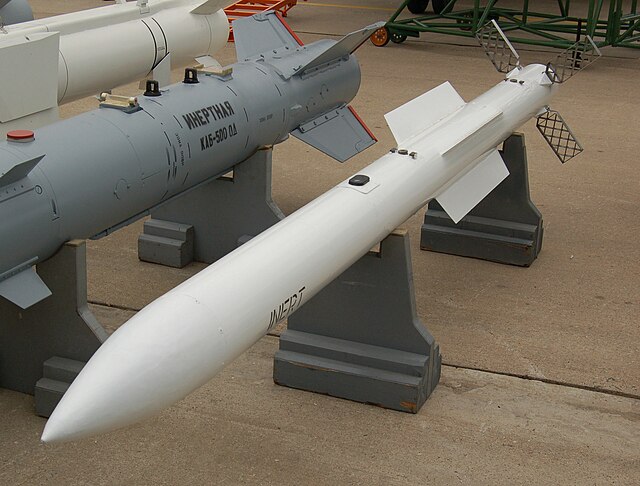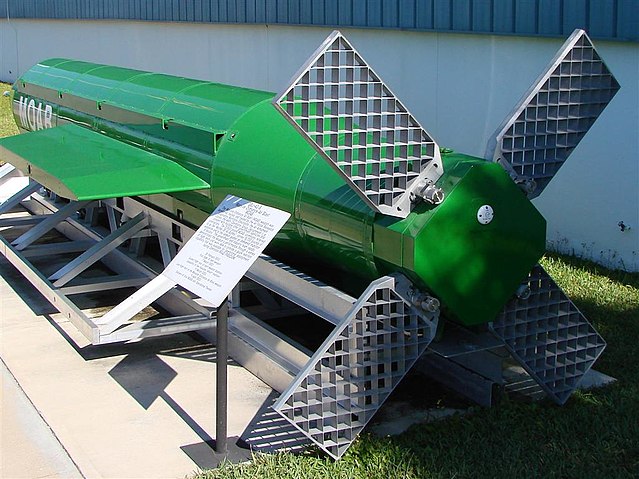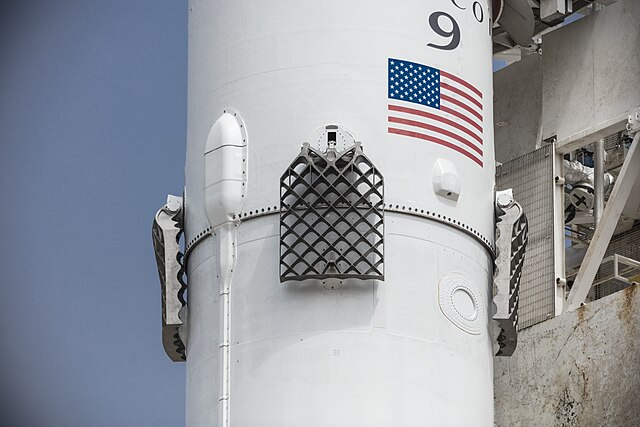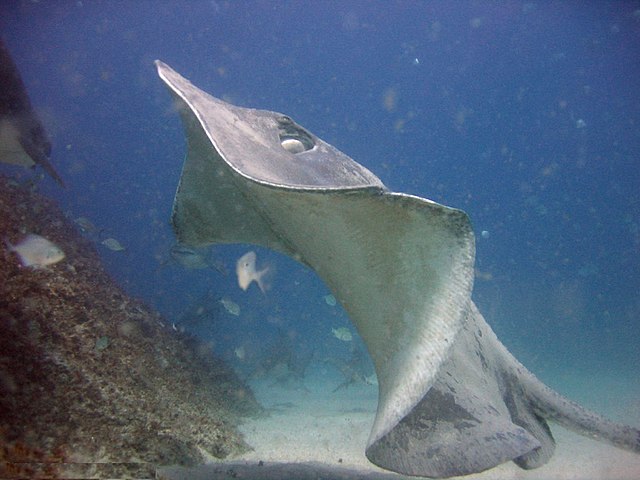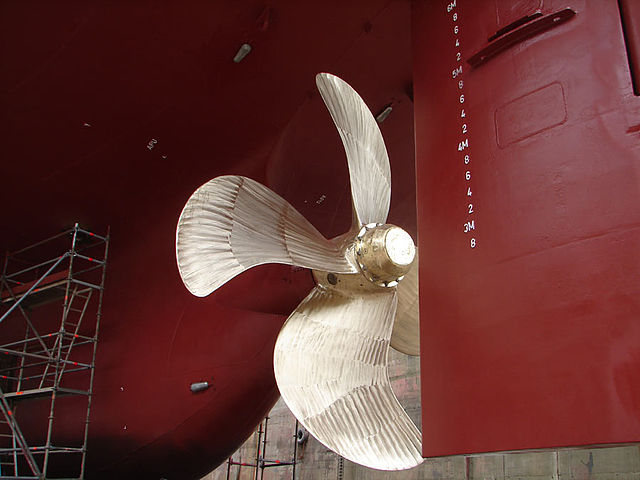Grid fins are a type of flight control surface used on rockets and bombs, sometimes in place of more conventional control surfaces, such as planar fins. They were developed in the 1950s by a team led by Sergey Belotserkovskiy and used since the 1970s in various Soviet ballistic missile designs such as the SS-12 Scaleboard, SS-20 Saber, SS-21 Scarab, SS-23 Spider, and SS-25 Sickle, as well as the N-1. In Russia, they are thus often referred to as Belotserkovskiy grid fins.
The Vympel NPO R-77 is a beyond-visual-range missile that uses grid fins. The gray KAB-500 OD guided bomb on the left of the image has conventional "planar" tail fins.
Closeup of MOAB grid fins
Initial design aluminum grid fins on the Falcon 9 v1.1 launch vehicle, undeployed. February 2015.
New design titanium grid fins on the Falcon 9 Full Thrust, undeployed. June 2017
A fin is a thin component or appendage attached to a larger body or structure. Fins typically function as foils that produce lift or thrust, or provide the ability to steer or stabilize motion while traveling in water, air, or other fluids. Fins are also used to increase surface areas for heat transfer purposes, or simply as ornamentation.
Fish get thrust moving vertical tail fins from side to side.
Cetaceans get thrust moving horizontal tail fins up and down.
Stingrays get thrust from large pectoral fins.
Ship propeller

